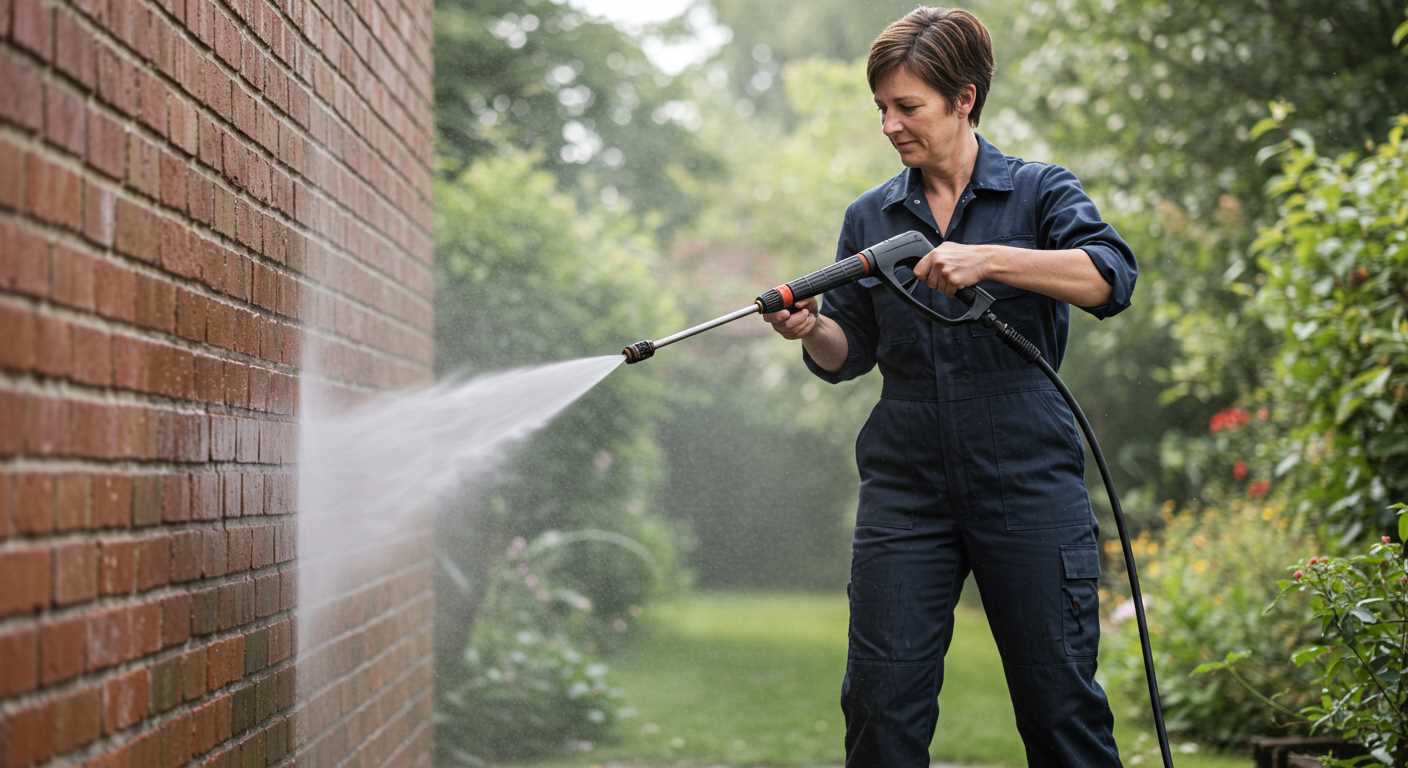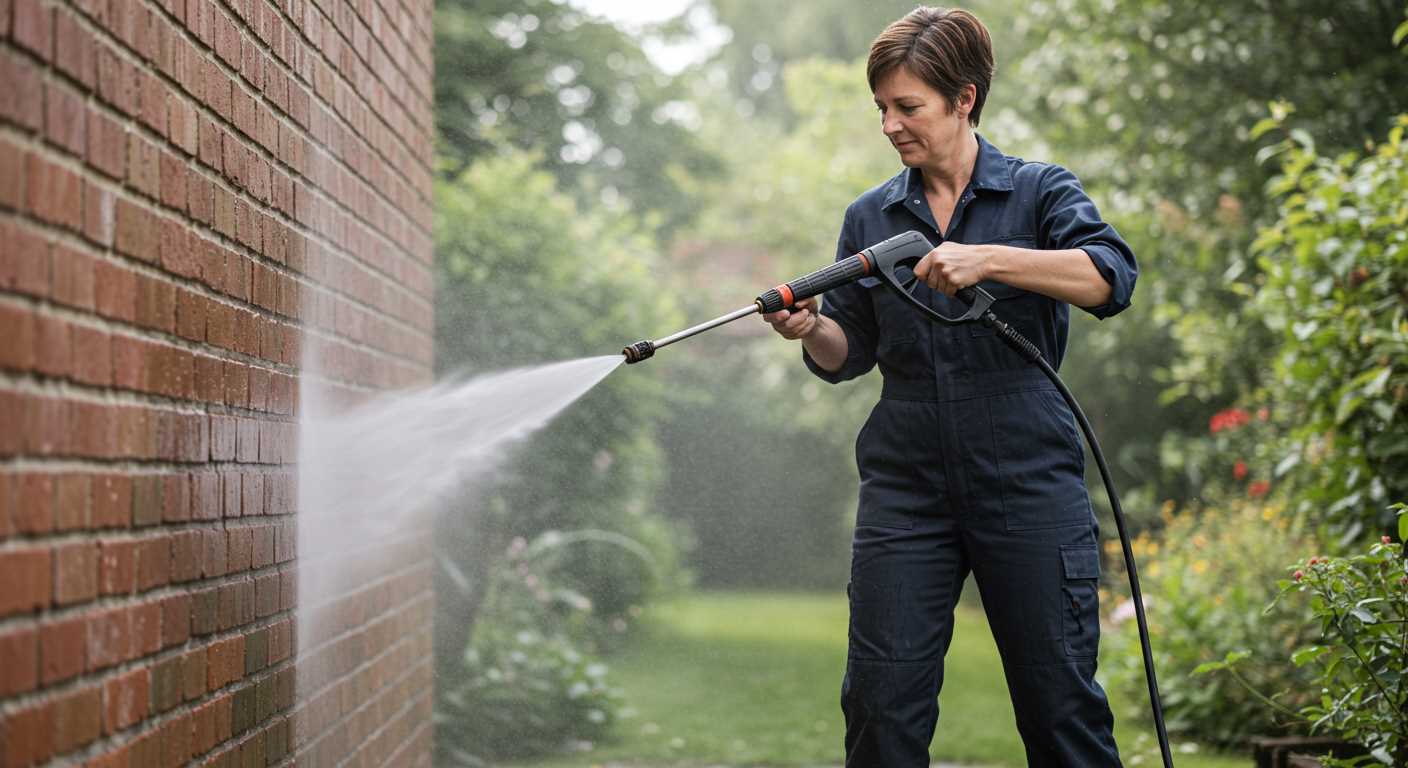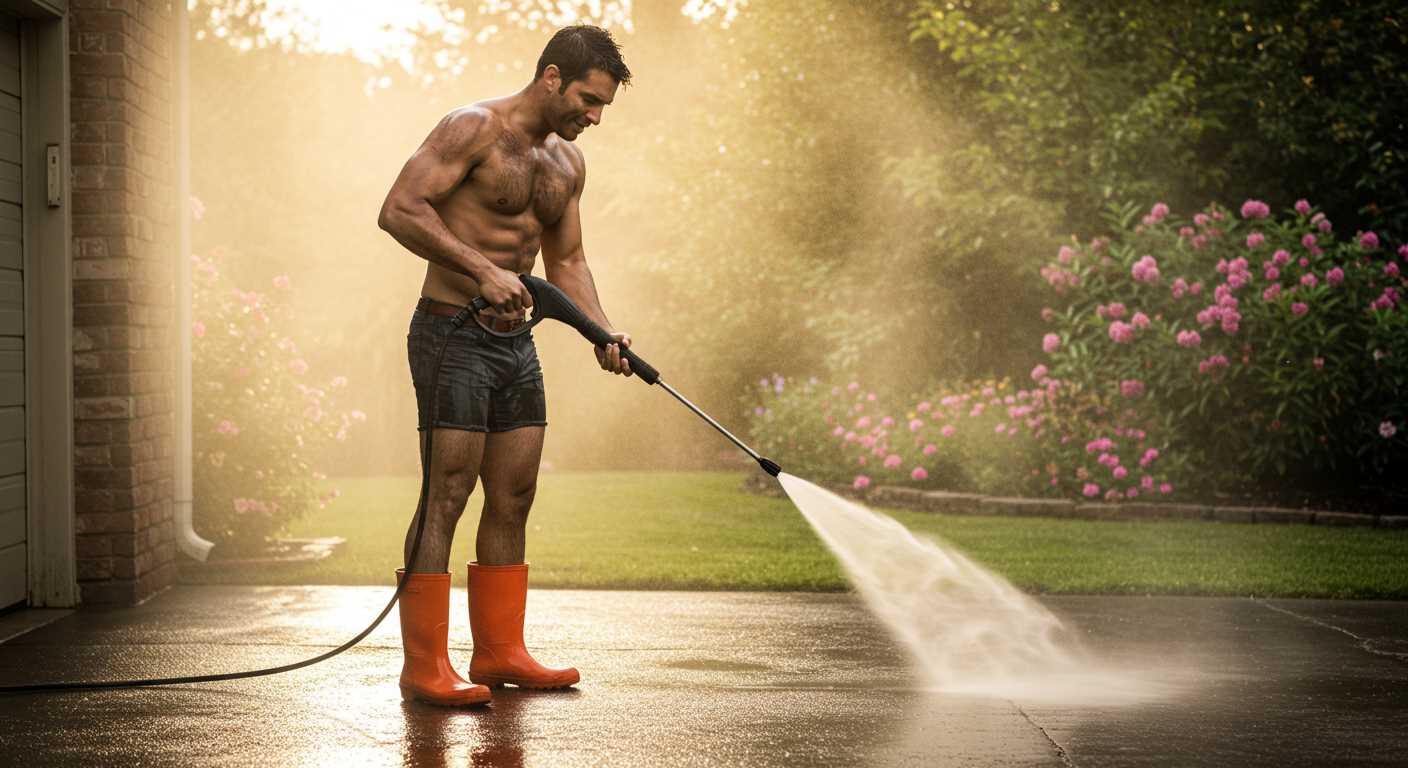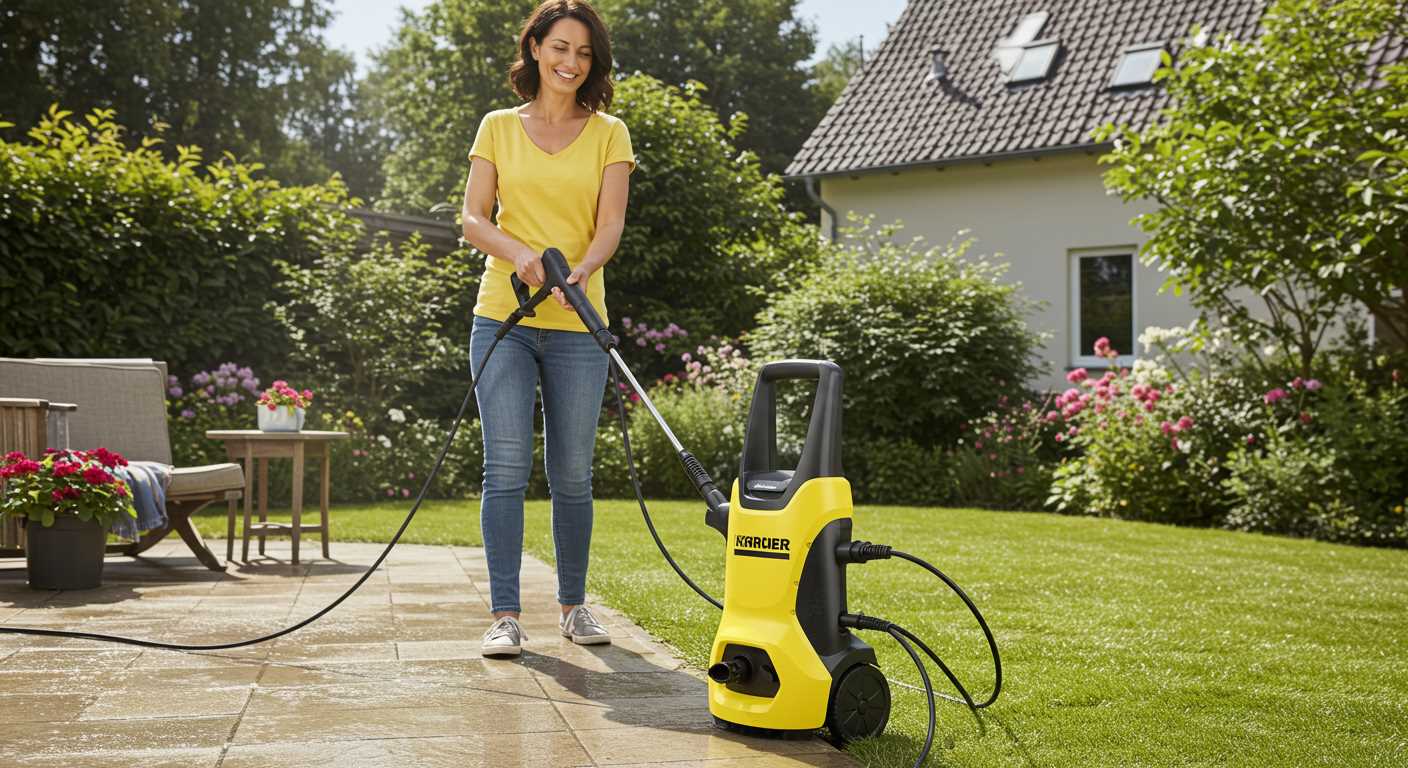




For a thorough refresh, I recommend a blend of warm soapy water and a stiff-bristled brush. This combination effectively tackles grime and mildew while being gentle on the surface. Apply the mixture liberally, letting it rest for a few minutes to break down stubborn dirt. Then, scrub in the direction of the grain to avoid scratches.
After scrubbing, a thorough rinse with a garden hose is essential. This method not only removes the soapy residue but also helps to reveal any areas that may need further attention. Pay special attention to corners and crevices, where debris often accumulates.
If you encounter persistent stains, a paste made from baking soda and water can work wonders. Apply it directly to the stained areas and let it sit for around 15 minutes before scrubbing again. This gentle abrasive action lifts the stain without damaging the finish.
To finish, consider applying a protective sealant to maintain the surface’s appearance and longevity. A good quality sealant provides a barrier against moisture and UV damage, ensuring your outdoor area remains inviting for years to come.
Effective Methods for Restoring Outdoor Wood Surfaces
Utilise a mixture of warm water and mild soap to tackle grime. A soft-bristle brush works wonders; scrub in the direction of the grain to avoid splintering. This method is gentle yet effective for removing dirt without causing damage.
Natural Solutions for Stubborn Stains
For tougher marks, a paste made from baking soda and water can be your ally. Apply it directly to the stain, let it sit for around 15 minutes, then scrub gently. Rinse thoroughly with clean water to ensure no residue remains. Alternatively, vinegar diluted with water can help lift stains and provide a natural disinfectant.
Maintenance Tips for Longevity
Regular maintenance is key. After cleaning, consider applying a suitable sealant to protect the surface from the elements. This not only enhances appearance but also extends the life of the material. For those who prefer an easier route, investing in a corded electric pressure washer can simplify future tasks, but manual methods remain effective with proper care.
Choosing the Right Cleaning Solution for Wood Decking
Select a cleaning agent that suits the specific type of timber you have. For softwoods like pine or cedar, a gentle soap solution mixed with warm water works wonders. For hardwoods, consider using a dedicated hardwood cleaner that’s formulated to preserve the natural oils and colour.
Biodegradable options are preferable; they are safer for surrounding plants and wildlife. I recall using a plant-based cleaner on my own patio, and it not only lifted grime effectively but also left no harsh chemicals behind. Avoid bleach, as it can discolour and damage the wood over time.
Here’s a simple comparison of common solutions:
| Cleaning Solution | Type of Wood | Pros | Cons |
|---|---|---|---|
| Warm Water & Soap | Softwoods | Gentle, easy to make | May require more scrubbing |
| Hardwood Cleaner | Hardwoods | Preserves colour and oils | Can be more expensive |
| Vinegar & Water | All types | Natural, non-toxic | Strong smell, may require rinsing |
| Oxygen Bleach | All types | Effective at removing stains | Can lighten wood if overused |
Always test your chosen cleaner on a small, inconspicuous area first. This avoids unexpected results and ensures compatibility with your surface. In my experience, even the best products can behave differently depending on the wood’s condition and age.
For stubborn stains, consider using a scrub brush with your solution rather than harsh chemicals. I once faced a particularly tough mildew problem, and after some scrubbing with a natural cleaner, the results were impressive. Patience pays off.
Preparing the Deck for Cleaning
Begin by removing all furniture, planters, and decorative items from the surface. This creates a clear working area and prevents any accidental damage during the scrubbing process. I once made the mistake of leaving a pot on my patio, and the residue it left took ages to scrub off.
Next, sweep away debris like leaves, dirt, and dust. Use a stiff broom for this task, as it helps dislodge stubborn particles. I recommend doing this on a windy day, as the breeze will aid in carrying away the loose debris.
Inspecting for Repairs
Before applying any solution, examine the boards for signs of damage. Look for splintered areas, loose nails, or any rot. I’ve encountered situations where neglecting this step led to a more extensive repair job later. If you find any issues, address them before proceeding.
Moisture Management
Ensure the surface is dry before applying any cleaning agent. If the deck has been recently exposed to rain, wait for a few dry days. I’ve noticed that working on a damp surface can dilute the effectiveness of the cleaning solutions, making the effort futile. Sunlight can help speed up the drying process, so plan your cleaning day accordingly.
By following these steps, you set a solid foundation for the upcoming cleaning efforts, ensuring that your results are as impressive as possible.
Gathering Necessary Cleaning Tools and Materials
First step: grab a few specific items to ensure an effective scrubbing session. Here’s a list of what you’ll need:
- Broom or Outdoor Brush: A sturdy broom or a specialised outdoor brush with stiff bristles will help remove debris and dirt.
- Bucket: A large bucket will be essential for mixing your cleaning solution and holding water.
- Mop or Deck Scrub Pad: A mop with a long handle or a scrub pad will allow you to apply the cleaning solution efficiently.
- Garden Hose: This will be necessary for rinsing off the area thoroughly after applying your solution.
- Protective Gear: Gloves, goggles, and a mask will protect your skin, eyes, and lungs from harsh chemicals if you’re using a strong cleaning solution.
- Rags or Towels: Keep some old rags handy for drying off any spills or drips during the process.
Now, let’s talk about cleaning solutions. If you prefer a homemade mixture, you’ll need:
- White Vinegar: This natural product can tackle stains and mildew effectively.
- Baking Soda: A great addition for scrubbing tough spots.
- Liquid Dish Soap: A few drops will create a soapy solution that’s gentle yet effective.
For commercial options, look for solutions specifically designed for outdoor surfaces. Always check the label for compatibility with your material.
Finally, ensure that you have a plan in place. Designate a specific area to work on, and gather everything you need before starting. This way, you won’t have to run back and forth, which can disrupt your momentum.
Applying the Cleaning Solution Evenly
For optimal results, distribute your chosen cleaning mixture uniformly across the surface. This ensures every area receives the necessary treatment for effective grime removal.
- Use a sprayer or roller: A garden sprayer or a paint roller equipped with an extension pole allows for an even application. This method helps avoid puddles and uneven spots.
- Work in sections: Divide the area into manageable parts. Start at one end and gradually move to the other, ensuring no section is left untreated.
- Maintain a consistent distance: If using a sprayer, keep the nozzle at a steady distance of about 30 cm from the surface. This helps achieve an even coat.
- Overlap strokes: When applying with a roller or sprayer, slightly overlap each stroke. This guarantees full coverage and prevents streaks.
- Use a brush for detail: For corners and edges, a stiff-bristled brush can help work the solution into crevices and ensure all areas are addressed.
Allow the mixture to penetrate for the recommended time before rinsing. This is crucial for loosening stubborn dirt and stains.
Adjust your method based on the surface condition. Heavily soiled areas may require additional application or scrubbing. Pay attention to how the solution reacts; a quick visual check can indicate if more is needed.
Finally, ensure you’re applying on a dry day to facilitate drying and effectiveness. This simple consideration can significantly enhance your cleaning efforts.
Scrubbing Techniques for Different Wood Types
For softer species like pine, use a nylon-bristle brush. This type of bristle won’t damage the surface, and the gentle scrubbing action effectively lifts dirt and grime. Apply a little pressure in circular motions, focusing on any stained areas. Rinse thoroughly with clean water after scrubbing to avoid any residue.
Hardwoods such as teak or mahogany require a different approach. Opt for a stiff-bristled brush for these denser materials. This will help penetrate the grain and remove embedded dirt. Be cautious with the amount of force you apply; excessive scrubbing can lead to scratches. Always follow up with a thorough rinse to prevent any cleaning solution from settling into the pores of the timber.
Composite Materials
For composite surfaces, a medium-bristle brush works well. These materials can often mimic wood, but they can be more resilient. Avoid harsh scrubbing; instead, use a back-and-forth motion to lift debris. Rinse afterwards with a hose to get rid of the loosened particles and the cleaning solution.
Special Care for Treated Timber
If your boards have been treated with sealants or stains, it’s vital to choose a soft-bristle brush. Aggressive scrubbing can strip these protective layers, leading to accelerated deterioration. Use gentle motions and check the surface regularly to ensure no damage occurs. Rinse well to maintain the integrity of the treatment.
Rinsing the Deck Without a Pressure Washer
A thorough rinse is crucial after applying the cleaning solution to eliminate residues and ensure the surface is free from soap or cleaning agents. Start by using a garden hose fitted with a spray nozzle. This setup provides control over water pressure, allowing you to adjust the flow as needed.
Begin rinsing at one end and work your way systematically across the surface. This method prevents leaving any areas unwashed. Maintain a consistent distance of about 12 to 18 inches from the surface to avoid excessive force, which could damage the material.
If the hose pressure is inadequate, consider filling a bucket with water and using a mop or sponge for rinsing. This method gives you precise control and ensures that you can reach corners and edges effectively. Work the sponge or mop across the surface, ensuring all cleaning solution is removed.
For stubborn spots, a gentle scrub with a soft bristle brush can help dislodge any remaining residue before rinsing again. Always follow up with a clear rinse to ensure no cleaning agents linger.
| Rinsing Method | Description |
|---|---|
| Garden Hose with Spray Nozzle | Adjustable pressure; ideal for general rinsing. |
| Bucket and Sponge/Mop | Precise control; effective for corners and edges. |
| Soft Bristle Brush | For scrubbing stubborn spots before rinsing. |
After rinsing, allow the area to dry naturally. Avoid stepping on the surface until it is completely dry to prevent marks or damage. Regular maintenance and proper rinsing techniques will prolong the lifespan of your outdoor surface, keeping it looking its best for years to come.
Dealing with Stubborn Stains on Wood Decking
For persistent blemishes, a paste of baking soda and water can work wonders. Mix until you achieve a thick consistency, then apply it directly onto the stain. Let it sit for at least 15 minutes to allow the mixture to penetrate the surface. Afterward, use a stiff-bristle brush to scrub in a circular motion. This technique not only lifts the stain but also helps to restore some of the wood’s natural grain.
If the stain remains, consider using white vinegar mixed with water in equal parts. Soak a cloth in the solution and place it over the stained area for about 30 minutes. The acidity in the vinegar helps break down tough residues. After this, scrub again with your brush. Rinse thoroughly to ensure no vinegar is left on the timber, as it can cause discolouration if left to dry.
For grease or oil stains, try cornstarch or talcum powder. Sprinkle generously over the stain and let it absorb for several hours, or ideally overnight. Afterward, sweep away the powder and scrub the area with a mixture of dish soap and warm water. This method is particularly effective as it draws out the grease without damaging the surface.
For those particularly resilient marks, such as rust, you may need to resort to a commercial cleaner designed specifically for such issues. Always follow the manufacturer’s instructions and conduct a spot test in an inconspicuous area to ensure compatibility with your surface. Apply the cleaner, allow it to sit as directed, and scrub with a brush to lift the stain.
Finally, ensure to rinse the area thoroughly after any treatment. Leftover cleaning agents can lead to further staining or discolouration over time. Regular maintenance will help keep your outdoor space looking its best and reduce the frequency of deep cleaning sessions.
Drying and Maintaining the Deck After Cleaning
After you’ve taken the time to refresh your outdoor space, ensuring it’s properly dried is crucial. Aim to let the surface air dry completely before placing any furniture or decor back. This typically takes 24 to 48 hours, but factors such as humidity and temperature can influence this. A good rule of thumb is to check if the surface feels cool to the touch; if it does, it’s likely still damp.
Tips for Effective Drying
- Ensure good airflow around the area. Open windows and doors or use fans to circulate air.
- If possible, position the area in direct sunlight, as this helps accelerate the drying process.
- Check for pooling water in any low spots; use a mop or cloth to soak up excess moisture.
Long-Term Care and Preservation
Maintaining the appearance and longevity of your outdoor platform requires regular upkeep. Here are some strategies that have worked well for me over the years:
- Apply a quality sealant after cleaning and drying. This protects against moisture and UV damage.
- Regularly inspect for signs of wear or damage, addressing any issues immediately to prevent further deterioration.
- Use a soft-bristle broom or a leaf blower to remove debris and leaves, which can retain moisture and lead to mould growth.
- Schedule a deeper clean every season to combat stains and build-up, using the same gentle methods you’ve employed before.
By staying proactive with maintenance and ensuring proper drying, your outdoor area will not only look appealing but also stand the test of time. Personal experience has shown me that a little preventive care goes a long way in preserving the beauty of your space.
Preventive Measures to Keep Your Deck Clean Longer
Regular maintenance is key to prolonging the pristine condition of your outdoor flooring. Start by applying a high-quality sealant annually. This barrier protects against moisture and UV damage, significantly reducing the accumulation of grime and mildew.
Another effective strategy is to create a debris management plan. Regularly sweep away leaves, dirt, and twigs to prevent them from trapping moisture and fostering mould growth. After heavy rain or storms, inspect the area and remove any residual debris promptly.
Consider placing mats or rugs at entry points to catch dirt and prevent it from being tracked onto the surface. Opt for those made from natural fibres, as they are less likely to degrade the finish over time.
Using furniture pads under tables and chairs can prevent scratches and indentations, which can attract dirt. Ensure that any pots or planters have trays underneath to catch excess water.
Lastly, invest in a reliable air compressor, like the best air compressor for computer cleaning. It can help blow away dust and debris from hard-to-reach areas, keeping the surface tidy and extending the time between more intensive cleaning sessions.








.jpg)


